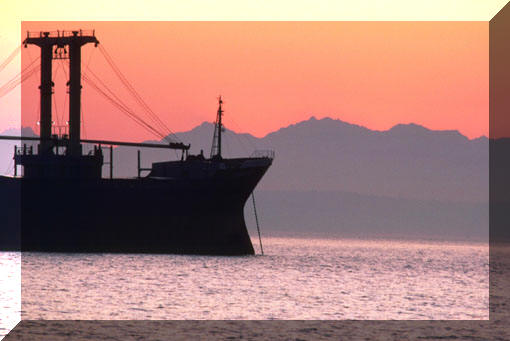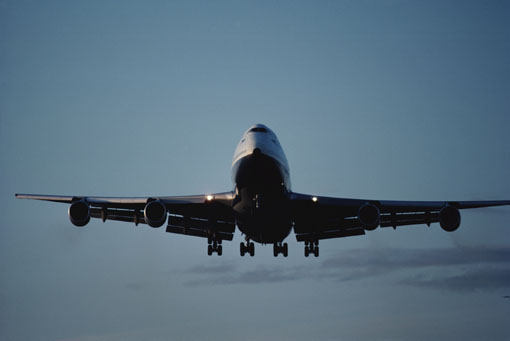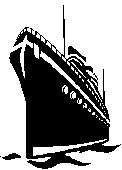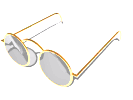

|
|

|
 |

Loading & Unloading Services
Loading & Unloading Services

The sea isn't always like this,
which is one of the many reasons we need to pack things properly.
Same goes for air freight, and who hasn't heard the expression bumpy
roads...
Various cargo needs
various handling and
packing.
Same holds true regarding loading and unloading.
In the shipping &
freight industry,
there are an extensive set of standard packing materials,
containers and ways of handling cargo for the safety of the contents and
for the sake of trust and confidence.
Both seller and buyer want their goods well taken care of
and the more speedy the handling process has become,
the more important it is with proper packing and handling procedures.

Here you'll find some of the most
frequently used packing materials and containers for goods being
shipped on an everyday basis
all over the world.
container,
large containers in various sizes, mostly of metal and can be
filled/loaded with e.g. crates, pallets, skids with marble sheets,
barrels, cars etc. These can be handled by container ships or planes
mainly configured to handle metal containers of various sizes all
closely stored and secured on top of each other and secured even
sideways to each other and firmly secured (fastened, strapped) to deck.
Special harbors and areas in ports have been designated for this purpose
only in what nowadays is referred to as container terminals or RO-RO
Terminals, Roll-on & Roll-off.
crate, wooden containers in various sizes, suitable for furniture, motorcycles, engines, machinery etc.
case, wooden containers in various sizes, suitable for lots of various things, devices, gadgets, fruit and whatever
There are quite often boxes and cartons inside a case.
Bundles of steel pipes etc. can be secured to pallets or skids thus making it easier for the forklift driver to handle loading and unloading procedures.
There may be lots of parcels a case and there may be lots and lots of cases in a container.
Barrels
are commonly of
wood and drums are made of metal.
Drums usually are used for containing oil, gasoline, kerosene
and similar petroleum products.
Kegs are similar to barrels but smaller and often used for beverages such as wine, whiskey and beer.
Demijohns, carboys are large small-necked glass containers (bottles) usually cased in wickerwork, good containers for fluids and chemicals of various kinds.

A typical
parcel is "paket" in
Swedish and could be a small post parcel (parcel post,
using mail service) wrapped in wrapping-paper and with a piece
of string around it.
However,
parcel can also mean a portion of a delivery or load, a bundle, a
quantity of something, a group of things, "ett
godspaket, virkespaket etc."...and a section of land.
A sack
or a bag may contain similar things
but mostly you find grain and potatoes etc. in sacks which are larger
than the bags which will contain other things.
Sacks are usually more
sturdy and strong as far as material goes whereas the bag quite
often is made of paper, e.g. a bag of yellow corn from Weaver, Indiana
on its way to become popcorn or caramel corn in one of the many Gold
Medal products available...
A bag is smaller, all the way down to what in Swedish is called "påse", like in a bag of roasted & salted OLW peanuts.
A roll
could be a huge roll of Swedish made paper from one of the major paper
mills, or a roll of copper cable.
The smaller rolls of cable or wire
are often secured/tied/strapped down onto pallets with metal bands/straps.
Also, inside a case or a box you can
store a whole bunch of sleeves in which are articles of some sort such
as paper cups, plastic cups, plastic tubes, drinking-glasses etc.
A
sleeve is a rather long and tubular shaped carton-like
box.
Sleeve also means "ärm" in Swedish as with garments
of various kinds (skjortärm, rockärm, högerärmen på din röda och blåa
blus etc. - shirt sleeve, overcoat sleeve, the right-hand sleeve of your
red & blue blouse etc.)
A cardboard box is a regular Swedish "pappkartong" or "papplåda".
Styrofoam is basically what we call "frigolit" in Swedish.
Often there might be a need for so-called loosefill chip packaging which may be best explained by saying "småflis/småbitar av plastskum" such as ECO-PLUS® which is a material that will reduce the dust of the loosefill packaging product and improve the cushioning properties of the final product.
Facts on polystyrene and a glossary on polyurethane ...
Facts on cardboard, sacks and paper bags ...
Information regarding packing material on shipments from US to Europe....
(US) IMPORTANT PACKAGING REQUIREMENTS FOR EXPORT SHIPMENTS Efffective October 1, 2001 (US) The European Union (EU) has adopted emergency measures impacting the use of coniferous Non-Manufactured Wood Packing (NMWP) used in the transport of goods to EU member countries. This includes pallets, crating, packing blocks, drums, cases, load boards, pallet collars, skids, etc. made or partially made from coniferous material. Coniferous wood includes pine, spruce, fir and hemlock. The emergency measures have been enacted to prevent the introduction of the pinewood nematode pest, which has caused extensive mortality to pines in Japan and China.
Railroad & Freight Vocabulary

Keep upright!

This side down!
Keep in a cool place! (Förvaras svalt)
Keep refrigerated! (Förvaras kyld)
Handle with care!
(Hanteras varsamt/försiktigt!)
Fragile! (skör, bräcklig, ömtålig)
Glass! (Glasvaror, glasartiklar, glas)
Perishable (färskvara, ömtålig)
Do not store in a damp place!
(Får ej förvaras på fuktig plats!)
Use no hooks!
Stow away from heat!
(Får ej förvaras nära
värmekälla!)
Keep dry!



 |
 |
|
|
|
 |
|
 |
|
|

© Swengelsk, KB ® webmaster |
|
|
 |